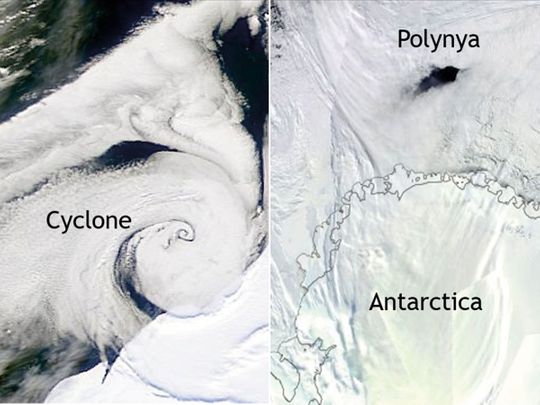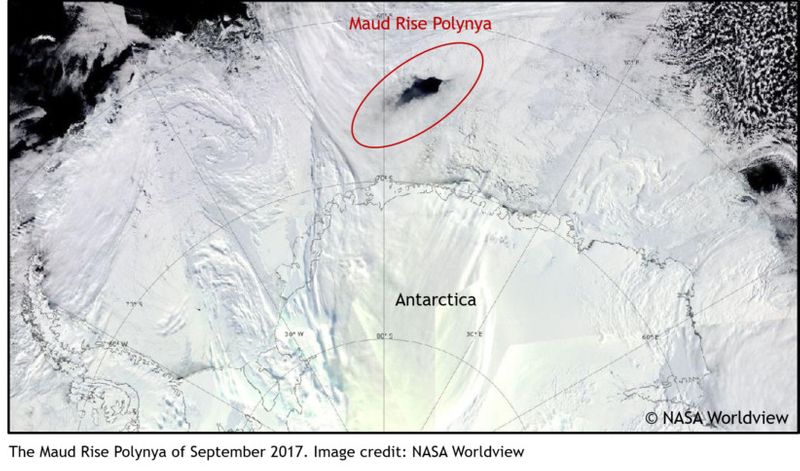
Abu Dhabi: A study led by New York University Abu Dhabi Institute (NYUAD) has helped unravel a four-decade-long mystery surrounding the occurrence of a mid-sea Polynya — a body of unfrozen ocean that appeared within the sea ice pack during Antarctica’s winter, almost two years ago.
The Maud-Rise Polynya was spotted in mid-September 2017 in the centre of a sea-ice pack in Antarctica’s Lazarev Sea, causing researchers to question how this phenomenon occurred during Antarctica’s coldest, winter months when sea ice is at its thickest. Due to its difficult access location, NYUAD scientists used a combination of satellite observations and reanalysis data to discover that cyclones and the strong winds that they carry over the sea ice pack cause the ice to shift in opposite directions, which leads to the appearance of the Polynya.
At the time of the discovery, the Maud-Rise Polynya was approximately 9,500 square kilometres large (equivalent to three times the land mass of the Emirate of Dubai), and grew by over 700 per cent to 800,000 square kilometres within a month. Eventually, the Polynya merged with the open ocean once the sea ice started to retreat at the beginning of the austral summer. Before 2017, the largest previous event was seen in the 1970s.

“Because of its large size, a mid-sea Polynya is capable of impacting the climate regionally and globally as it modifies the oceanic circulation. It is important for us to identify the triggers for their occurrence to improve their representation in models and their effects on climate,” said Diana Francis, the lead research scientist from NYUAD’s Centre for Global Sea Level Change.
“Given the link between Polynya and cyclones we demonstrated in this study, it is speculated that Polynya events may become more frequent under warmer climate because these areas will be more exposed to more intense cyclones,” she added.
“Previous studies have shown that under a warmer climate, polar cyclone activity will intensify, and extratropical cyclone tracks will move toward Antarctica which could decrease the sea-ice extent and make Polynya preconditioned areas closer to the cyclones formation zone,” Francis said.











